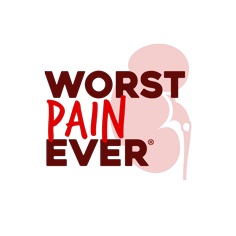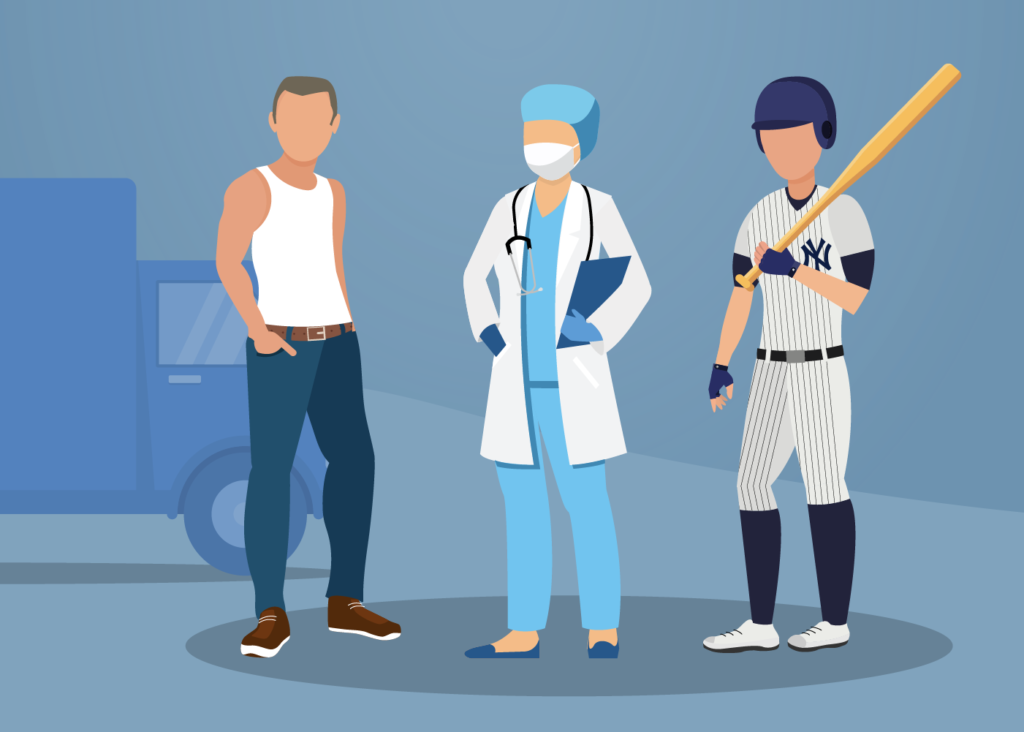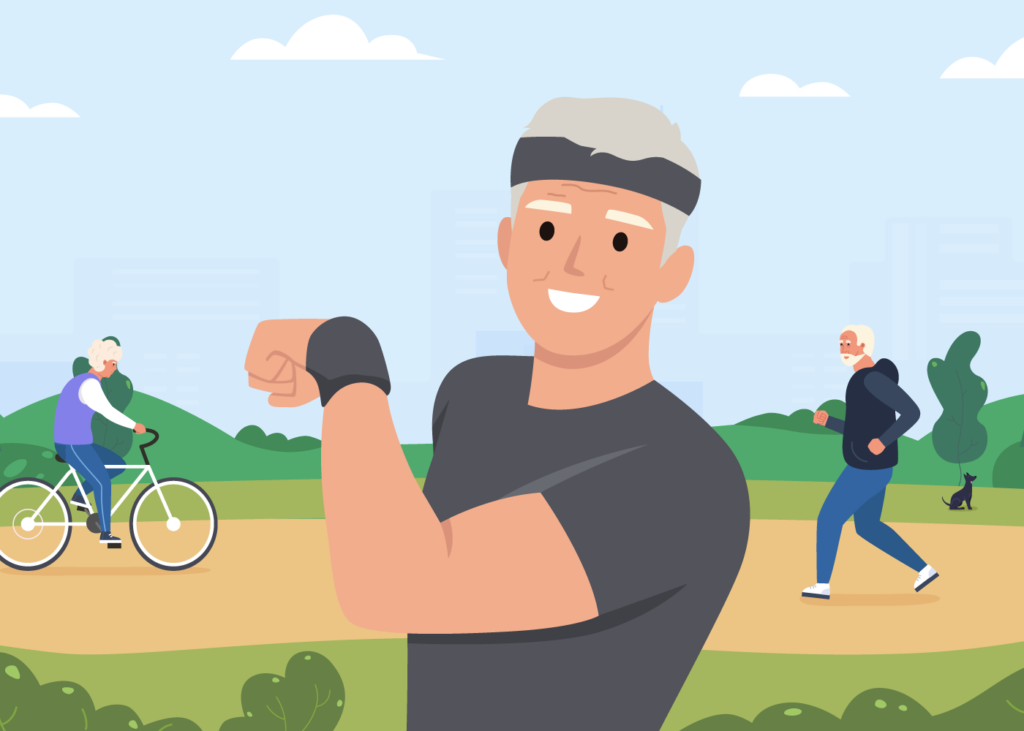You may have heard it all before: that your diet, fluid intake, family history and history of other medical conditions are major risk factors for kidney stone development and recurrence. But did you know that environmental risk factors for kidney stones exist as well?
If you’re a secretary or long-haul trucker, your job may be putting you at higher risk of forming kidney stones. Here’s why!
Can my job affect my kidney stone risk?
Possibly.
It all comes down to three main factors: your working environment, your access to sufficient bathroom breaks and the time that you spend sitting down.
These factors primarily impact your ability to stay sufficiently hydrated, to urinate regularly and to stay reasonably healthy.
How would my working environment lead to more kidney stones?
If you spend most of your time working outdoors, or directly under the sun, you may be at increased risk of kidney stone formation. This is especially so, if you’re a farmer, athlete or military personnel.
The warm temperature outside causes your body to sweat more, which can easily dehydrate your body, causing your urine concentration to increase. Saturated urine formed in the kidneys may contain higher level of minerals, which can accelerate the process of their crystallization. This eventually leads to stone formation2.
During the influx of Department of Defense personnel into southwestern Asia in the early 2000’s, researchers from the 47th Combat Support Hospital of Fort Lewis, Washington, investigated the impact of seasonality on stone disease. Servicemen who were deployed in Kuwait were found to have a higher prevalence of kidney stones, due to its hot, arid climate there. In fact, it took only an average of 93 days of deployment before the onset of their first stone! The researchers concluded that high daily temperatures present a high risk environment for stone formation3.
The best way to beat the odds? Make sure you drink up, and stay hydrated throughout the day.
It’s hard for me to ask for bathroom breaks. Will that pose a problem to my kidney stone risk?
For sure.
Insufficient bathroom breaks is a common issue faced by teachers, customer service staff, warehouse workers, long-haul truckers, and even surgeons! Fun fact: in a survey of health care professionals at the Mayo Clinic, physicians who worked in operating rooms had a higher prevalence of kidney stones4.
In such working conditions, most people resort to limiting their water intake, to reduce their need to pee. This contributes to dehydration, and increases their urine concentration and risk of forming kidney stones.
If you’re a kidney stone former struggling to get sufficient bathroom breaks, epidemiologists from the National Institute For Occupational Safety and Health recommend speaking to your company, union or worker representative5.
It may help to get a letter from your urologist, to explain the need to improve bathroom access in your workplace.
How does my desk job increase my kidney stone risk?
When you’re spending hours sitting down and being sedentary, this puts you at greater risk of becoming obese and/or developing metabolic syndrome.
You may have metabolic syndrome if you have three or more of the following: a large waistline, high blood pressure, high blood sugar levels, high blood triglycerides and low “good” HDL cholesterol.
Patients with metabolic syndrome are up to 6 times more likely to get kidney stones, and experience a lower stone-specific quality of life6. Maintaining a healthy lifestyle and exercising regularly are some ways to lower your risk of developing metabolic syndrome and kidney stones!
In Summary
Your job can affect your kidney stone risk, if your working conditions and habits make you more prone to dehydration or physical inactivity. The bright side is that there are steps you can take to mitigate these environmental risk factors!
As always, drink up and try to exercise when you can.
Sources:
-
Malieckal , D. A., & Goldfarb, D. S. (2020, March). Occupational Kidney Stones. Current opinion in nephrology and hypertension. Retrieved June 3, 2022, from https://pubmed.ncbi.nlm.nih.gov/31895162/
-
Siener, R. (2021, June 3). Nutrition and kidney stone disease. Nutrients. Retrieved June 3, 2022, from https://www.ncbi.nlm.nih.gov/pmc/articles/PMC8229448/
-
Evans, K., & Costabile, R. A. (2005, March). Time to development of symptomatic urinary calculi in a high risk environment. The Journal of Urology. Retrieved June 3, 2022, from https://www.sciencedirect.com/science/article/abs/pii/S0022534705603588
-
mayonewsreleases. (2013, May 3). Kidney Stones prove occupational hazard for surgeons, Mayo Clinic study finds – mayo clinic news network. Mayo Clinic. Retrieved June 3, 2022, from https://newsnetwork.mayoclinic.org/discussion/kidney-stones-prove-occupational-hazard-for-surgeons-mayo-clinic-study-finds/
-
Johnson, C., Menendez, C. C., & Trout, D. (2019, November 22). Bathroom breaks. Centers for Disease Control and Prevention. Retrieved June 3, 2022, from https://blogs.cdc.gov/niosh-science-blog/2019/11/22/bathroom-breaks/
-
Lim, J. R. Z. L., Scotland , K. B., Bechis, S. K., Sur , R. L., Nakada, S. Y., Antonelli , J. A., Streeper , N. M., Sivalingam , S., Viprakasit , D. P., Averch, T. D., Landman, J., Chi, T., Pais, Jr, V. M., Bird , V. G., Andonian, S., Bhojani , N., Canvasser, N. E., Harper , J. D., Penniston, K. L., & Chew , B. H. (2020, September 3). Metabolic syndrome negatively impacts stone-specific quality of life. Journal of endourology. Retrieved June 3, 2022, from https://pubmed.ncbi.nlm.nih.gov/32689819/





